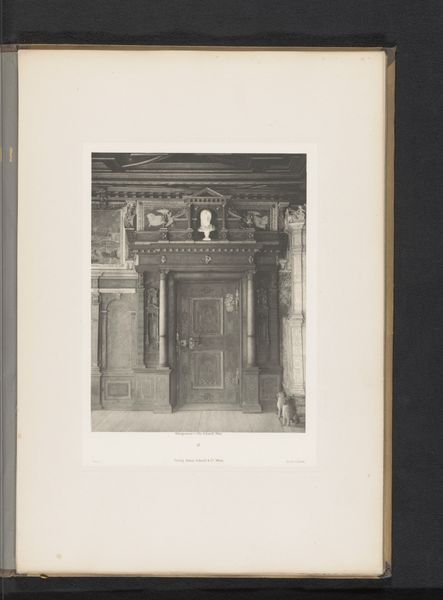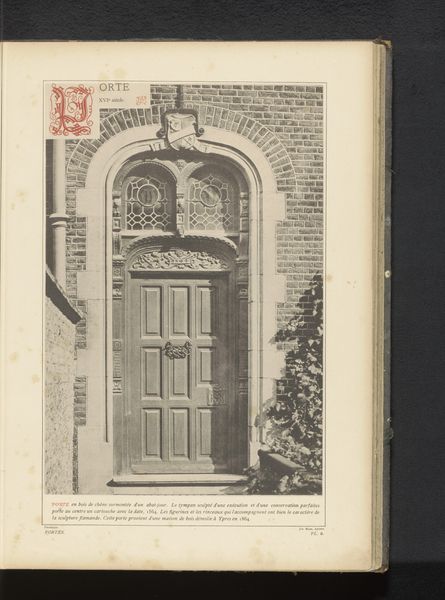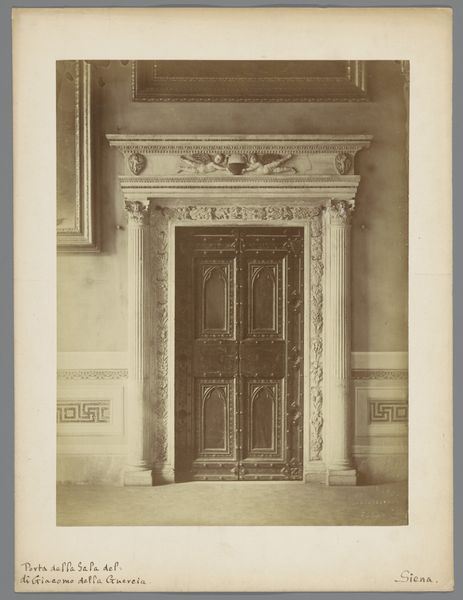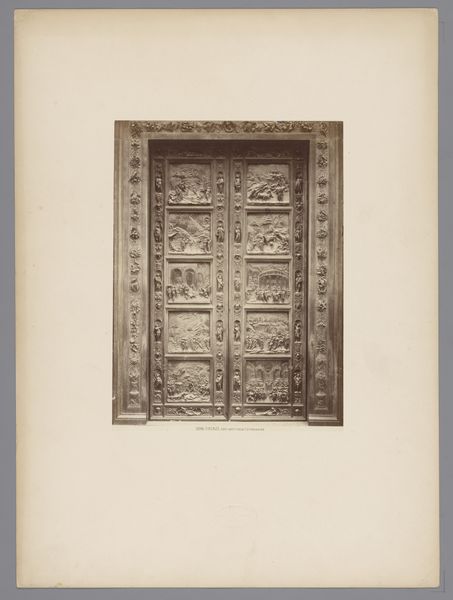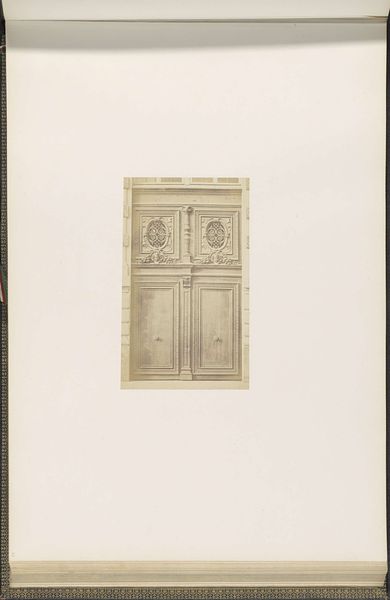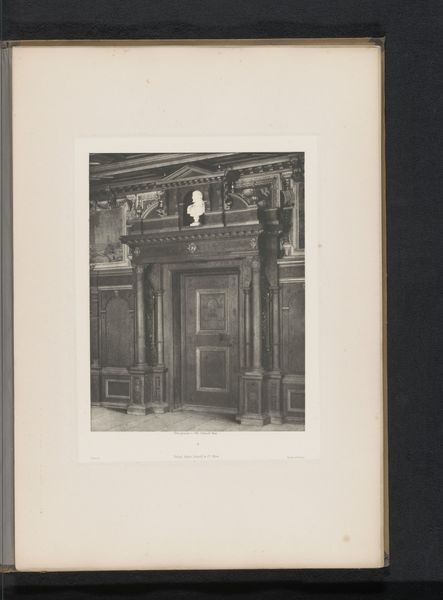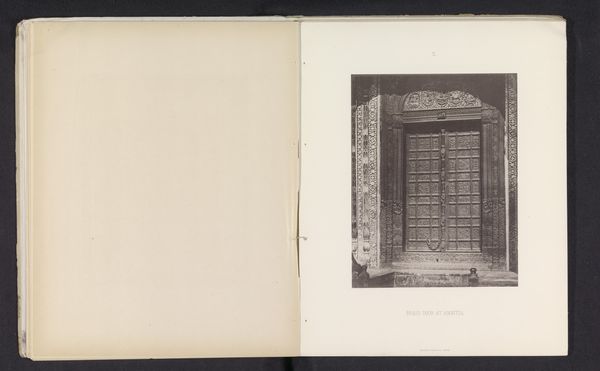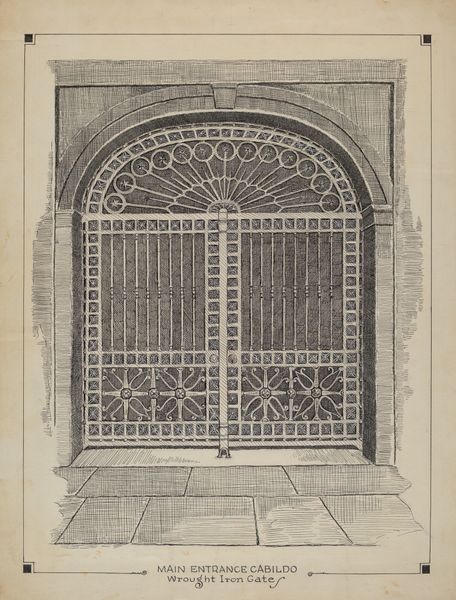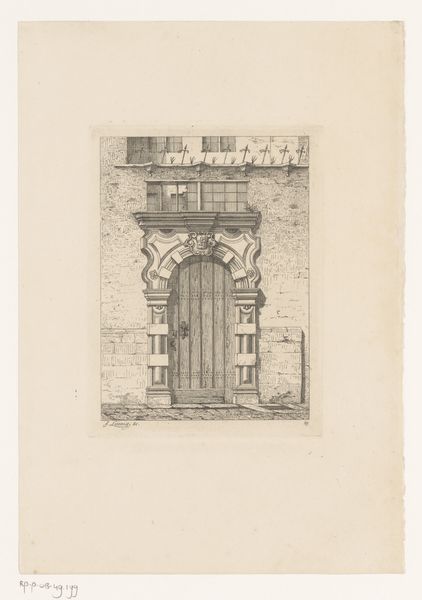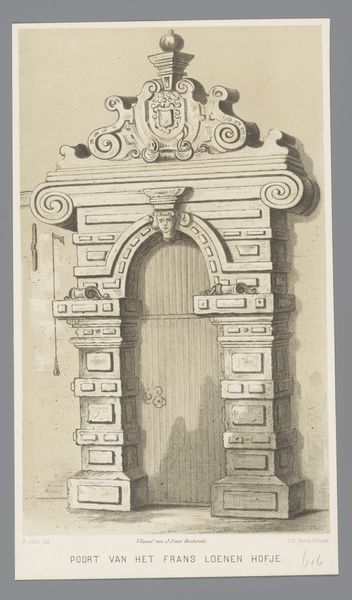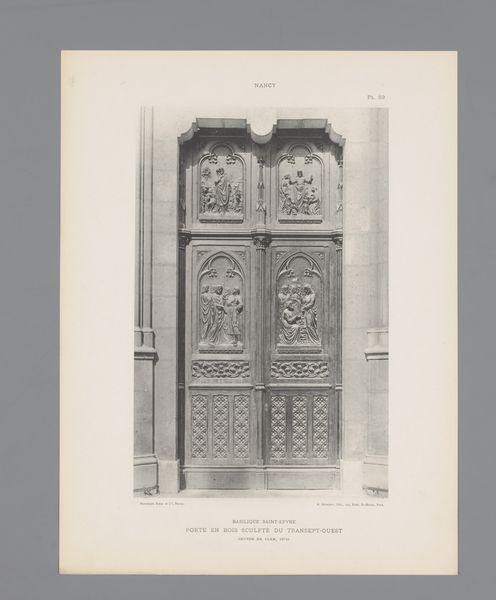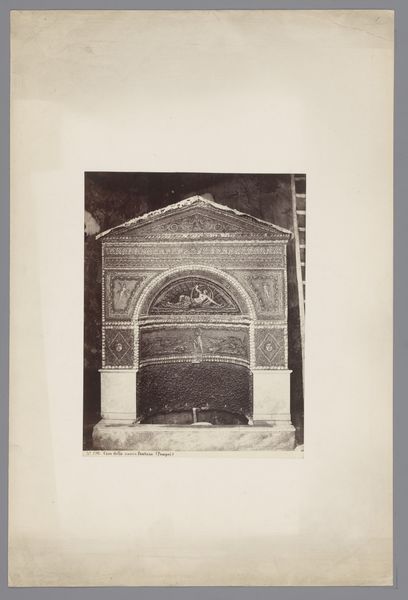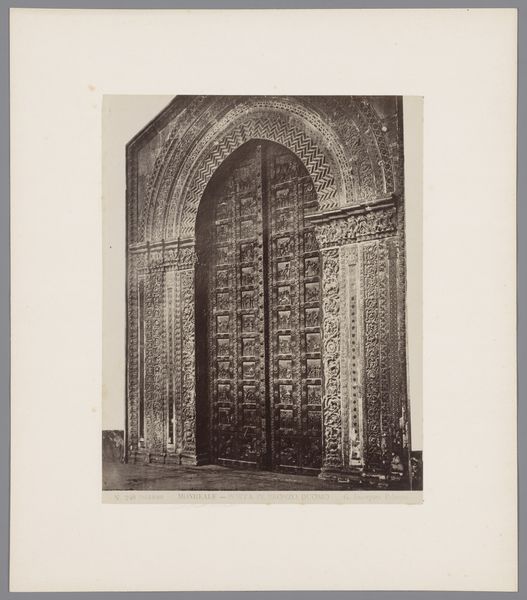
#
aged paper
#
homemade paper
#
paper non-digital material
#
pale palette
#
muted colour palette
#
light coloured
#
white palette
#
folded paper
#
paper medium
#
soft colour palette
Dimensions: height 395 mm, width 310 mm
Copyright: Rijks Museum: Open Domain
Editor: This is a photograph entitled "Bronzen deur van de San Marco in Venetië," taken by Carl Heinrich Jacobi before 1885. The paper looks quite old, with a soft, almost faded quality. I'm struck by how much texture is captured. What catches your eye about this image? Curator: Immediately, I’m drawn to the interplay of materials represented: the bronze door, the stone frame, the brickwork – and of course the photographic paper itself. How does Jacobi’s choice of medium—photography, and this particular photographic process—influence our perception of the original materials of the door? Does the act of reproduction alter its inherent value? Editor: That's interesting. I hadn't considered the photograph as a material choice with its own implications. Do you mean how it removes the bronze door from its historical context and turns it into a commodity or an art object? Curator: Precisely! And we should also ask, who was Jacobi producing this image for, and why? The ease of reproducibility suggests a democratization of access, but consider also the socio-economic implications of tourism and cultural consumption during this period. This image provided access to art to individuals beyond the elites. The material nature of the photograph—its production, distribution, and consumption—became a part of the door’s evolving narrative. Editor: So, by focusing on the materials and context, we can see beyond the surface representation and explore deeper questions about art and society? Curator: Exactly. Thinking about materials invites a closer inspection of the social and economic conditions embedded within this seemingly straightforward photograph. It forces us to think about labor, access, and how objects accrue meaning through circulation and consumption. Editor: I've learned so much by considering how materials affect an artwork's cultural value!
Comments
No comments
Be the first to comment and join the conversation on the ultimate creative platform.
